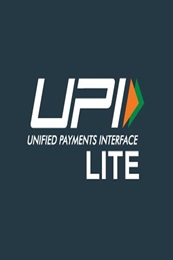Mobile Banking: The Smartest Way to Manage Your Money
April 03, 2025

India's digital payments landscape is experiencing unprecedented growth. Statista projections indicate that the mobile payments market is set to reach ₹245 trillion by the financial year 2025, a substantial increase from ₹80 billion in 2015. This surge underscores a significant shift towards digital transactions, making financial services more accessible and efficient for millions. As smartphones become indispensable, mobile banking is transforming financial management—offering unparalleled speed, convenience, and security. Whether it's paying bills, transferring funds, or investing on the go, mobile banking ensures that banking services are always just a tap away.
What is Mobile Banking?
Mobile banking refers to financial transactions and services provided by banks through smartphone, both iOS and Android, applications or USSD services. It allows customers to access their bank accounts, transfer funds, pay bills, invest, and apply for loans—all without visiting a physical branch. With the rise of digital transformation, mobile banking is no longer just an option but a necessity.
Services Offered via Mobile Banking
Mobile banking apps provide a wide range of financial services, including:
- Fund Transfers : Transfer funds on the go and anytime with NEFT, IMPS, RTGS, and UPI transactions.
- Bill Payments : Electricity, water, broadband, DTH, and more.
- Investment & Savings : Open Fixed Deposits, Recurring Deposits, Savings Account and manage your money efficiently.
- Recharge : Recharge your prepaid mobile and/or DTH effectively.
- Create Debit Card PIN : Create your debit card PIN by entering the card expiry date and CVV code.
- Account Management : View account balance, mini statements, and transaction history. You can also view e-passbook, loan instalment details, request for cheque, Form 15G/H, TDS details, view and/or update nominee details, etc.
Benefits of Mobile Banking
1. 24/7 Accessibility
Mobile banking removes the constraints of banking hours, allowing you to manage finances anytime, anywhere.
2. Convenience & Time-Saving
Forget standing in long queues! Mobile banking enables quick transactions with just a few taps.
3. Instant Fund Transfers
With UPI and IMPS, transferring money to friends, family, or businesses happens in real-time, even on holidays.
4. Secure Transactions
Advanced encryption, two-factor authentication, and biometric security features ensure your transactions remain safe.
5. Paperless Banking
Say goodbye to physical documentation—mobile banking promotes an eco-friendly, paperless approach to transactions and account management.
6. Better Expense Tracking
Most banking apps offer real-time expenditure tracking, helping you manage budgets effectively.
Safe Mobile Banking Tips
While mobile banking is highly secure, users must take precautions:
- Use Strong Passwords – Set a unique and complex password for banking apps.
- Enable Two-Factor Authentication (2FA) – Adds an extra layer of security.
- Avoid Public Wi-Fi – Hackers can exploit unsecured networks.
- Keep Your App Updated – Regular updates fix vulnerabilities and enhance security.
- Verify Before Clicking Links – Avoid phishing scams by double-checking links and sender details.
- Log Out After Use – Especially when using a shared or public device.
Final Thoughts
Mobile banking is no longer a luxury—it’s a necessity in today’s fast-paced world. It offers unmatched convenience, security, and control over financial transactions. As digital banking continues to evolve, embracing mobile banking ensures you stay ahead in managing your finances efficiently.
FAQs
1. Is mobile banking safe?
Yes, mobile banking uses encryption, biometric authentication, and OTPs for secure transactions. However, users must follow safety practices like using strong passwords and avoiding suspicious links.
2. Can I use mobile banking without the internet?
Yes, USSD-based banking services allow basic transactions without an internet connection. However, for full-fledged app-based banking, an internet connection is required.
3. What should I do if I lose my phone?
Immediately log into internet banking from another device and block access. Also, notify your bank to secure your account.
4. How do I register for mobile banking?
Download your bank’s app, enter your registered mobile number, and follow the verification steps using OTP or ATM details.
5. Are there any charges for mobile banking?
Most banks offer mobile banking for free, but some services like SMS alerts or international transactions may have minimal charges.
6. Can I transfer large amounts via mobile banking?
Yes, but transaction limits vary by bank. UPI typically allows transfers up to ₹1 lakh per day, while NEFT and RTGS have higher limits.
7. Can I apply for a home loan through mobile banking?
Yes, many banks provide instant home loan applications through mobile banking apps, allowing users to check eligibility and upload documents online.
8. How can I check my account balance using mobile banking?
You can check your balance through the bank’s mobile app, USSD codes, or by sending an SMS to the bank’s designated number.
9. What happens if my mobile banking transaction fails?
Failed transactions are usually reversed within 24-48 hours. If not, contact your bank’s customer support with transaction details.
10. Can I block my debit card through mobile banking?
Yes, mobile banking apps offer the option to block/unblock cards instantly in case of loss or fraud.
Latest Blogs

What Happens When You Leave Your Savings Account Unused?
April 01, 2025
Imagine waking up one day to find that your hard-earned money is locked away and inaccessible. Sounds stressful, right? This is precisely what happens when you leave your Savings Account inactive for too long.

Unified Pension Scheme (UPS): Everything You Need to Know
March 29, 2025
The Pension Fund Regulatory and Development Authority (PFRDA) has announced the Unified Pension Scheme (UPS) will be operational from April 1, 2025.

What Does DPD Mean in CIBIL Report?
March 27, 2025
Your CIBIL report is like a financial passport that determines your credibility as a borrower. Whether you’re applying for a home loan, personal loan, or even a credit card, lenders will carefully review your CIBIL report before making a decision.

Are You Eligible for Section 80EE or Section 80EEA Tax Benefits?
March 26, 2025
Imagine this: Ravi, a young IT professional in Bangalore, has just booked his dream home. While planning his finances, he hears about tax benefits under Section 80EE and Section 80EEA but is confused about which one applies to him.

First Salary? 10 Smart & Fun Ways to Make It Count!
March 26, 2025
That magical moment has arrived—you’ve received your first salary! It’s not just money; it’s your hard-earned reward for months (or years) of effort, learning, and persistence.





